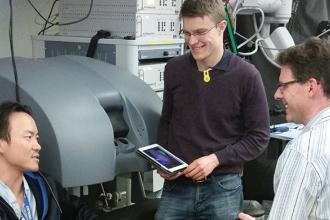Re: Innovation is everywhere. Why isn’t it here?
It was interesting to read Dr Cadesky’s comments about the failure of innovation in health care [BCMJ 2018;60:389]. One of the remarkable and potentially game-changing functions is physicians’ use of computers to keep records. This is something I have been involved with for over 30 years and observed on many committees and projects in British Columbia, Canada, and internationally. It has been frustrating to see ideas that were put forward 20 or 30 years ago still not come to fruition. British Columbia has been a world leader in a number of areas related to the use of computers, including the innovation of high-speed Internet and the development of PharmaNet.
The current crop of EMR products cause a lot of frustrations among users, and it has been reported that EMR difficulties contribute to physician burnout. There is, thankfully, finally an awareness of the importance of being able to exchange data between different providers and organizations. Over the years work has been done in British Columbia to define the requirements for facilitating the exchange of clinical data. There is continued frustration that movement toward incorporating these requirements into EMRs has been very slow. EMR vendors do not seem to be willing to accept that their products are in need of a lot of remediation. Organizations that generate data like hospitals and laboratories are also slow to replace aging systems that are not capable of generating reports in a manner that could be easily consumed by systems in our offices. Finally, physician organizations have not been willing to support physicians who are willing to work on defining the EMR requirements to the level of detail that is needed to achieve interoperability. Various projects in BC and elsewhere in Canada, including Infoway, have repeatedly defined important elements as being “out of scope,” and there was an unwillingness to “get into the weeds.” As a result we have to deal with EMR vendors that have a rudimentary understanding of clinical workflows, what data we need, and how it should be presented. It would be nice if there was support for a small group of physicians to work on the details that would make things operate at the high-performance level that we are all hoping for. This group could be either at the provincial or national level.
—Raymond Simkus, MD
Langley
This letter was submitted in response to “Innovation is everywhere. Why isn’t it here?”

